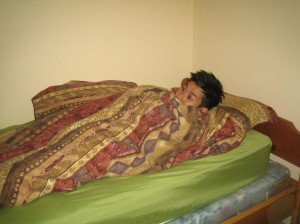It is important to note that the bones in the spinal column are responsible for protecting the nerves that start from the brain up to the back. The vertebrae are separated by the rubber-like disks that provide cushion to the bones. Any injury or strain can push these disks out of place which is a condition called as herniated disks or even rupture that can cause numbness, pain and weakness in the back or neck.
The usual area where a herniated disk occurs is in the lower back or lumbar area. A certain percentage of cases involving herniated disks occur in the neck and rarely in the thoracic disks. Most cases usually heal within a span of 6 months but some would require surgery since the standard treatment options fail or the disk fragment has embedded in the spinal canal, thus pressing on a nerve.
Rest
In case the pain is severe and persistent, the individual should be under bed rest for 1-2 days followed by a period of reduced activity. Even though it is necessary to avoid any form of physical activity, the individual must avoid any movements that worsen the symptoms including lifting, bending, prolonged periods of sitting and incorrect body mechanics.
If you suspect that an individual has a herniated disk, you have to instruct him/her to stop any activity in order to prevent further damage to the affected disks.

Medications
Over-the-counter medications such as aspirin, ibuprofen, naproxen or acetaminophen can be used for mild to moderate pain. You can register for first aid training if you want to learn more about pain management measures aside from medications. In most cases, the doctor will prescribe muscle relaxants such as diazepam for the muscle spasms. As for herniated disks triggered by abrupt injury, narcotic painkillers as well as non-steroidal anti-inflammatory drugs (NSAIDs) are given. In rare cases, steroids can be administered intravenously or orally. The reduction of pain and inflammation will allow the individual to take part fully in activities that can help heal the herniated disk.
Physical therapy
Physical therapy is vital for individuals who have disk issues in order to achieve full recovery. Always remember that physical therapy helps strengthen the muscles, alleviate the pain and improve the flexibility of the individual. The treatment typically involves the application of heat and ice, electrical stimulation, ultrasound and rehabilitation in order to improve the back health of the individual as well as protect against future injuries.
Steroid injections
The steroid injections are administered into the area of the herniated disk in order to relieve lower back pain for several months but these could not provide lasting benefits though. The steroids that are injected into the epidural space can reduce the swelling and inflammation surrounding the nerve.
